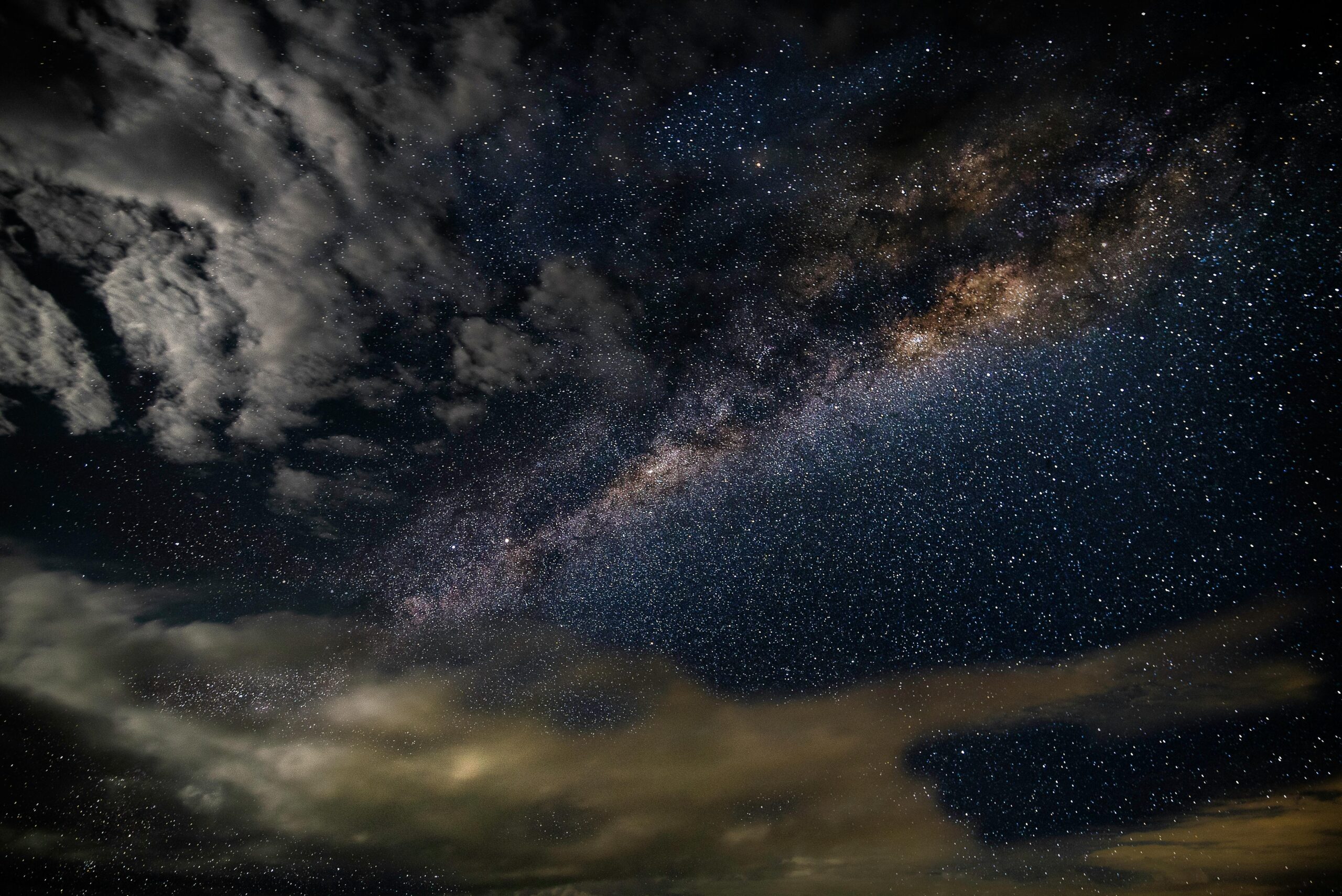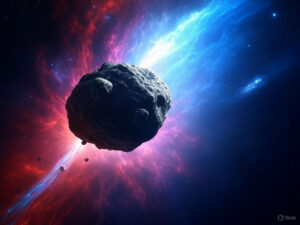Ever thought about what makes up our vast universe? It’s a complex and mysterious place. It’s filled with different elements that come together to create our cosmos.
The universe composition is a topic that scientists and astronomers find very interesting. It includes stars, galaxies, dark matter, and dark energy. These cosmic ingredients are diverse and fascinating.

Learning about the universe’s makeup helps us understand its beginnings, growth, and future. As we delve into the cosmic ingredients of the universe, you’ll see its complexity and beauty more clearly.
Key Takeaways
- The universe is made up of various elements, like stars, galaxies, and dark matter.
- Dark energy is a mysterious force that makes the universe expand.
- We still don’t fully understand the universe’s composition and it’s being studied.
- Knowing what the universe is made of helps us understand its origins and growth.
- The ingredients of the universe are diverse and complex.
The Building Blocks of Everything
To understand the universe, we must look at its basic parts. Everything we see, from the air to the stars, is made of these fundamental units. They are the foundation of all matter.
Atoms: The Basic Units
Atoms are the smallest parts of a chemical element and keep their chemical traits. They have a nucleus with electrons around it. The nucleus holds protons and neutrons, and the number of protons tells us what element it is.
Subatomic Particles: Going Deeper
Subatomic particles make up atoms, including electrons, protons, and neutrons. Protons and neutrons are made of quarks, which are very basic particles. Electrons, however, are considered basic because they can’t be split further.
The Standard Model Explained Simply
The Standard Model of particle physics explains how subatomic particles act and interact. It groups particles into fermions (matter like quarks and electrons) and bosons (forces like photons and gluons). Knowing the Standard Model helps us understand the universe at its most basic level.
The Visible Universe: Only 5% of Reality
Did you know that everything we can see makes up just 5% of the universe? This small part is called the visible universe or ordinary matter.
Ordinary Matter in Perspective
Ordinary matter is what we’re used to – stars, planets, galaxies, and us. It’s made of atoms, which are the basic units of everything around us. Atoms are made of protons, neutrons, and electrons, and how they interact forms all visible matter.

Where Visible Matter Exists
Visible matter is found in many forms across the universe. It’s what makes up stars, planets, and galaxies. You see it in the stars at night, the planets in our solar system, and the galaxies beyond our Milky Way. Any object that emits, reflects, or absorbs light is part of the visible universe.
Why We Can See and Interact With It
We can see and interact with ordinary matter because it interacts with light. When light hits an object, it can be absorbed, reflected, or transmitted. This lets us see the object. Our ability to see and understand the visible universe comes from these interactions between matter and light.
In summary, the visible universe, though small, is key to understanding our world. It’s the part we can see and interact with.
Dark Matter: The Invisible 27%
As you explore the cosmos, you’ll find that dark matter makes up 27% of the universe. It’s invisible to our telescopes because it doesn’t interact with light.
How We Know It’s There
Swiss astrophysicist Fritz Zwicky first suggested dark matter in the 1930s. He noticed galaxies in clusters were moving faster than expected. This hinted at unseen mass holding them together.
Since then, many lines of evidence have backed Zwicky’s idea. These include:
- Galactic Rotation Curves: The rotation curves of galaxies show stars and gas orbiting at a constant speed. This means stars in the outer regions are moving faster than expected, pointing to unseen mass.
- Galaxy Clusters: The way galaxy clusters and hot gas between them are distributed shows there’s more mass than we can see.
- Large-Scale Structure of the Universe: The universe’s structure can be explained by dark matter. It provides the gravitational framework for normal matter to clump together.
- Cosmic Microwave Background Radiation: Data from satellites like WMAP and Planck also supports dark matter.
Leading Theories About Dark Matter
Despite the evidence, dark matter’s nature is still a mystery. Several theories try to explain what it could be:
- Weakly Interacting Massive Particles (WIMPs): WIMPs interact via the weak nuclear force and gravity, making them hard to detect.
- Axions: Axions are hypothetical particles that could solve a problem in particle physics. They are very light and interact weakly with normal matter.
- Sterile Neutrinos: Sterile neutrinos are hypothetical particles that don’t interact via any fundamental forces. This makes them invisible to most detection methods.
The Hunt for Dark Matter Particles
Scientists are working hard to find dark matter particles. Direct detection experiments try to observe dark matter particles interacting with normal matter. Indirect detection looks for signs of dark matter annihilation or decay, like gamma rays or neutrinos.
As research goes on, we’re slowly uncovering the mystery of dark matter. Understanding it is key to a complete picture of the universe and its evolution.
Dark Energy: The Mysterious 68%
When you look up at the night sky, you see a universe expanding and speeding up. This is thanks to dark energy, a mysterious force making up about 68% of the universe. It’s a big mystery in modern astrophysics.
The Force Behind Cosmic Acceleration
Dark energy is thought to be behind the universe’s speeding up. This speeding up was first seen in the late 1990s through distant supernovae. These supernovae helped measure how fast the universe was expanding over time.
This discovery was a big surprise. It showed that the universe’s expansion wasn’t slowing down because of gravity. Instead, it was speeding up.

What We Know (and Don’t Know)
Even though we know dark energy exists, we don’t know what it is. Scientists have many theories. Some think it’s a property of space itself, like Einstein’s cosmological constant. Others believe it’s a dynamic field that changes over time.
Despite a lot of research, we still don’t know what dark energy is. Scientists keep exploring different ideas and models.
How Dark Energy Shapes Our Universe’s Fate
Dark energy’s presence affects the universe’s future. If it stays the same or gets stronger, the universe could expand too fast. This could tear apart space, known as the “Big Rip.”
If dark energy gets weaker or changes, the expansion might slow down or even stop. Knowing about dark energy is key to understanding the universe’s future.
Scientists are still learning about dark energy. They use the cosmic microwave background, large-scale structure, and supernovae to study it. By studying this mystery, we’re learning more about the universe and its possible future.
The Four Fundamental Forces
Did you know that just four forces control all interactions in the universe? These fundamental forces shape everything, from tiny atoms to huge cosmic structures.
Gravity: The Force of Attraction
Gravity is the most familiar force to us. It shapes the universe’s large-scale structure. It’s what attracts two bodies towards each other.
Gravity keeps planets orbiting stars and makes objects fall towards the ground.
Electromagnetism: Light and Charge
Electromagnetism acts between charged particles, like protons and electrons. It holds atoms together and transmits light. This force can be either attractive or repulsive, depending on the charges involved.
Strong Nuclear Force: Holding Atoms Together
The strong nuclear force is the strongest but works over very short distances. It holds protons and neutrons together inside an atom’s nucleus. It overcomes the positive charge of protons that would otherwise repel each other.
Weak Nuclear Force: Enabling Radioactive Decay
The weak nuclear force is key in certain radioactive decay processes. It helps transform one subatomic particle into another. This force is vital for processes like beta decay in radioactive materials.
| Force | Description | Range |
|---|---|---|
| Gravity | Attracts two bodies towards each other | Infinite |
| Electromagnetism | Acts between charged particles | Infinite |
| Strong Nuclear Force | Holds protons and neutrons together in the nucleus | Very short |
| Weak Nuclear Force | Facilitates certain types of radioactive decay | Short |
What Is the Universe Made Of? A Simple Breakdown of Cosmic Ingredients
Did you know the universe is made of different parts? It’s like a recipe card with various ingredients. This card shows what makes up our vast universe.
The Cosmic Recipe Card
The universe has three main ingredients: ordinary matter, dark matter, and dark energy. Let’s take a closer look:
| Cosmic Ingredient | Percentage |
|---|---|
| Ordinary Matter | 5% |
| Dark Matter | 27% |
| Dark Energy | 68% |
How These Ingredients Interact
These ingredients work together in complex ways. Ordinary matter makes up stars, galaxies, and planets. Dark matter helps ordinary matter stick together. Dark energy makes the universe expand faster.
Knowing what the universe is made of helps us understand its past and future. By studying these ingredients, we learn more about the universe’s secrets.
Stars and Galaxies: Cosmic Architecture
When you look up at the night sky, you see a tiny part of the universe’s cosmic architecture. The universe is filled with many celestial objects. But stars and galaxies play a big role in its structure.

How Stars Form and Function
Stars are huge balls of gas that keep life going through nuclear fusion. They start from giant molecular clouds that collapse under gravity. The cloud breaks into denser parts, becoming protostars.
Galaxies: Cities of Stars
Galaxies are huge systems with stars, gas, dust, and dark matter. They vary in shape and size. Some have a few million stars, while others have trillions.
Clusters and Superclusters: The Largest Structures
Galaxies don’t exist alone; they form clusters and superclusters. These groups are held by gravity. They help us understand the universe’s growth and cosmic architecture.
The Elements: From Hydrogen to Uranium
Did you know the universe has 118 known elements? Each one is unique and plays a special role.
Primordial Elements
Hydrogen and helium are the primordial elements. They were created in the Big Bang. Hydrogen is the lightest and most common, making up 75% of the universe.
Helium is the second most common, making up 24%. These elements are the universe’s foundation. Their amounts have stayed the same since the universe began.

Heavier Elements Forged in Stars
Elements like lithium to uranium are made in stars. This happens through nuclear fusion. It turns lighter elements into heavier ones, releasing lots of energy.
When stars die, they explode as supernovae. This scatters these elements across the universe.
Cycling of Elements
Elements go through a cycle in the universe. They are formed, destroyed, and made again. This cycle adds heavier elements to the universe.
These elements then go into new stars, planets, and life. Knowing this cycle helps us understand the universe’s growth and makeup.
The Cosmic Microwave Background: Echo of the Big Bang
Studying the cosmic microwave background gives us a peek into the universe’s makeup. This faint glow is a leftover from the Big Bang, marking the universe’s start. It shows us what the universe looked like when it was just 380,000 years old.
What It Tells Us About Composition
The cosmic microwave background tells us about the universe’s basic makeup. Small changes in the radiation show how matter and energy were spread out early on. These changes helped form galaxies and galaxy clusters.
By looking at the cosmic microwave background, scientists can figure out how much ordinary matter, dark matter, and dark energy there is in the universe.
How Scientists Map and Study It
Scientists use advanced satellites and telescopes to study the cosmic microwave background. These tools measure tiny temperature and polarization changes across the sky. By studying these, researchers learn about the universe’s beginnings, makeup, and growth.
The cosmic microwave background is a key tool for understanding the universe’s history.
How Our Understanding Has Evolved
Our journey to understand the universe is filled with curiosity and scientific leaps. Looking back at the history of space discoveries, we see major moments that changed how we see the cosmos.
From Ancient Models to Modern Physics
Long ago, people thought Earth was the center of the universe. But, with the rise of heliocentric models and modern physics, our view changed a lot. These shifts show how science keeps evolving.
Major Breakthroughs in Cosmic Composition
Some big discoveries have changed what we know about the universe’s makeup. Key ones include:
- The discovery of dark matter and dark energy, which are most of the universe.
- Learning about nucleosynthesis and how stars create elements.
- Seeing the cosmic microwave background radiation, a Big Bang leftover.
These findings have greatly influenced our view of the universe.
How Technology Has Expanded Our Knowledge
New tech has been key in deepening our cosmic knowledge. With space telescopes and advanced tools, scientists can study the universe more closely. For example,
As we delve deeper into the universe, our knowledge will grow with new tech and discoveries.
Unsolved Mysteries About Universal Composition
It’s surprising to find out that the universe’s makeup is still a mystery. As we delve deeper into space, many big questions keep us guessing. These questions challenge our basic understanding of the universe.
The Matter-Antimatter Asymmetry
The universe mostly has matter, but the Big Bang should have made equal amounts of matter and antimatter. The reason for this imbalance is still a mystery.
The Nature of Dark Matter and Dark Energy
Dark matter and dark energy are huge mysteries in space. We know they exist because of their pull on things, but we don’t know what they are. Scientists are working hard to figure them out.
Quantum Gravity: The Missing Piece
Another big mystery is how to mix quantum mechanics with general relativity, known as quantum gravity. This is key to understanding the universe at its core.
What Future Discoveries Might Reveal
With better technology and new ways to look at the universe, scientists hope to find answers. They might learn what dark matter and dark energy are, solve the matter-antimatter problem, and understand quantum gravity.
These mysteries show how complex and fascinating the universe is. They keep scientists eager to explore and learn more about space.
Conclusion: Our Evolving Understanding of the Cosmos
Exploring the universe with us shows how our knowledge keeps growing. We see stars and galaxies, but also dark matter and dark energy. Each discovery helps us understand the universe better.
Our journey through the universe’s parts has shown us there’s still a lot to learn. Scientists are working hard to figure out dark matter and dark energy. Their research will keep revealing new things about the cosmos.
Understanding how the universe changes is exciting. As we find new things, our view of the universe will change. This will help us appreciate the vast and complex world we live in.
FAQ
What is the universe primarily made of?
The universe is mostly dark energy, dark matter, and regular matter. Dark energy makes up about 68%. Dark matter is around 27%, and regular matter is about 5%.
What is dark matter, and how do we know it exists?
Dark matter is invisible matter that doesn’t reflect light. We know it’s there because it pulls on regular matter. This is seen in how galaxies and galaxy clusters move.
What are the four fundamental forces of nature?
The four forces are gravity, electromagnetism, the strong nuclear force, and the weak nuclear force. They tell us how particles interact. These forces are key to understanding the universe.
How do stars form, and what is their role in the universe?
Stars form from giant molecular clouds. They light up the universe and create heavy elements. Stars also shape galaxies and their evolution.
What is the cosmic microwave background radiation?
It’s the leftover heat from the Big Bang. We see it as microwave radiation everywhere. It tells us a lot about the universe’s start and how it’s changed.
What is the Standard Model of particle physics?
The Standard Model explains how fundamental particles work. These particles are the basic building blocks of everything. It’s a key theory in physics.
How does the universe’s composition affect its expansion?
The universe’s makeup, especially dark energy, drives its expansion. Dark energy is thought to speed up this expansion.
What is the matter-antimatter asymmetry problem?
This problem is about why there’s more matter than antimatter. The universe mostly has matter, but the Big Bang should have made equal amounts of both.













